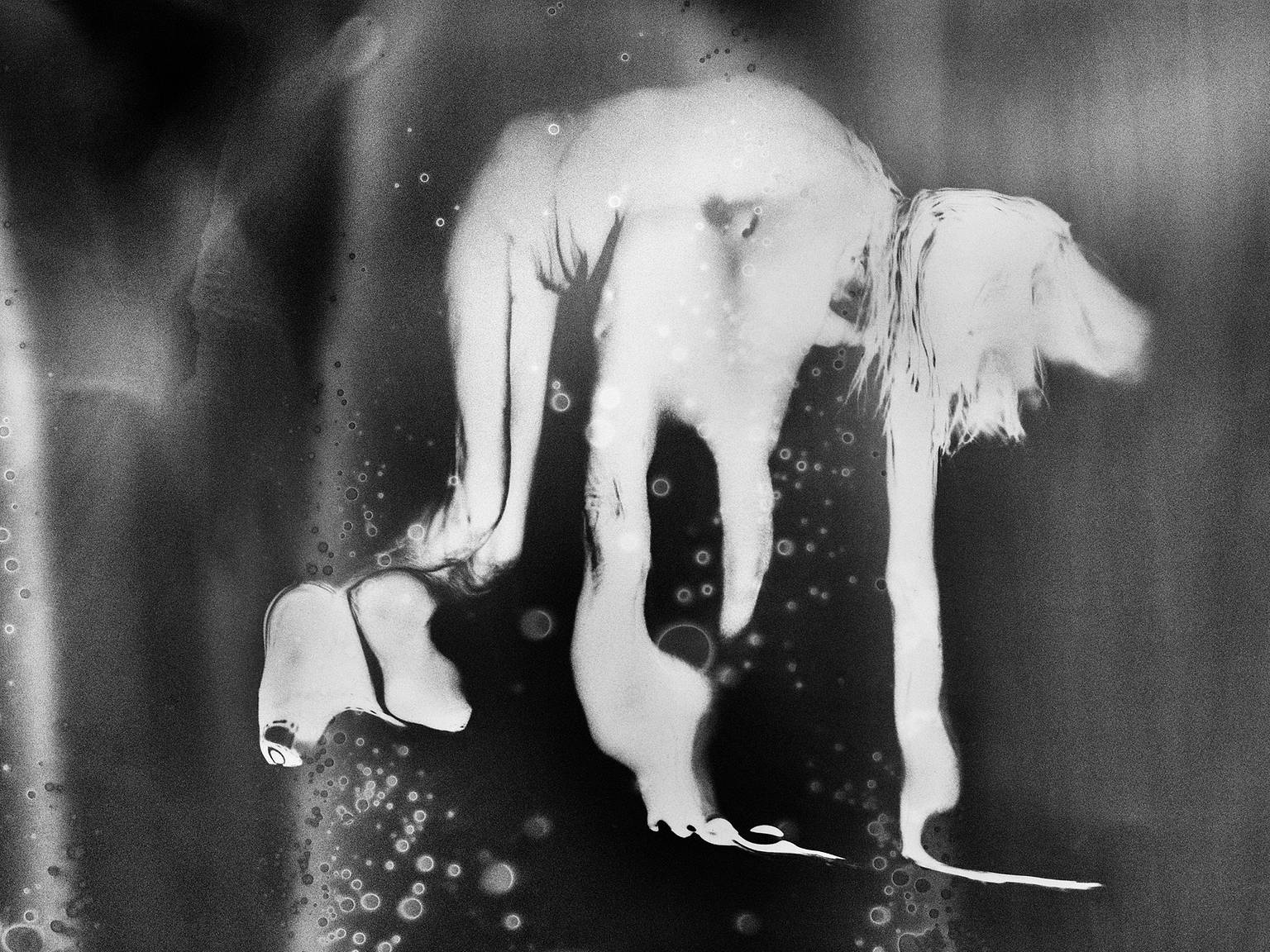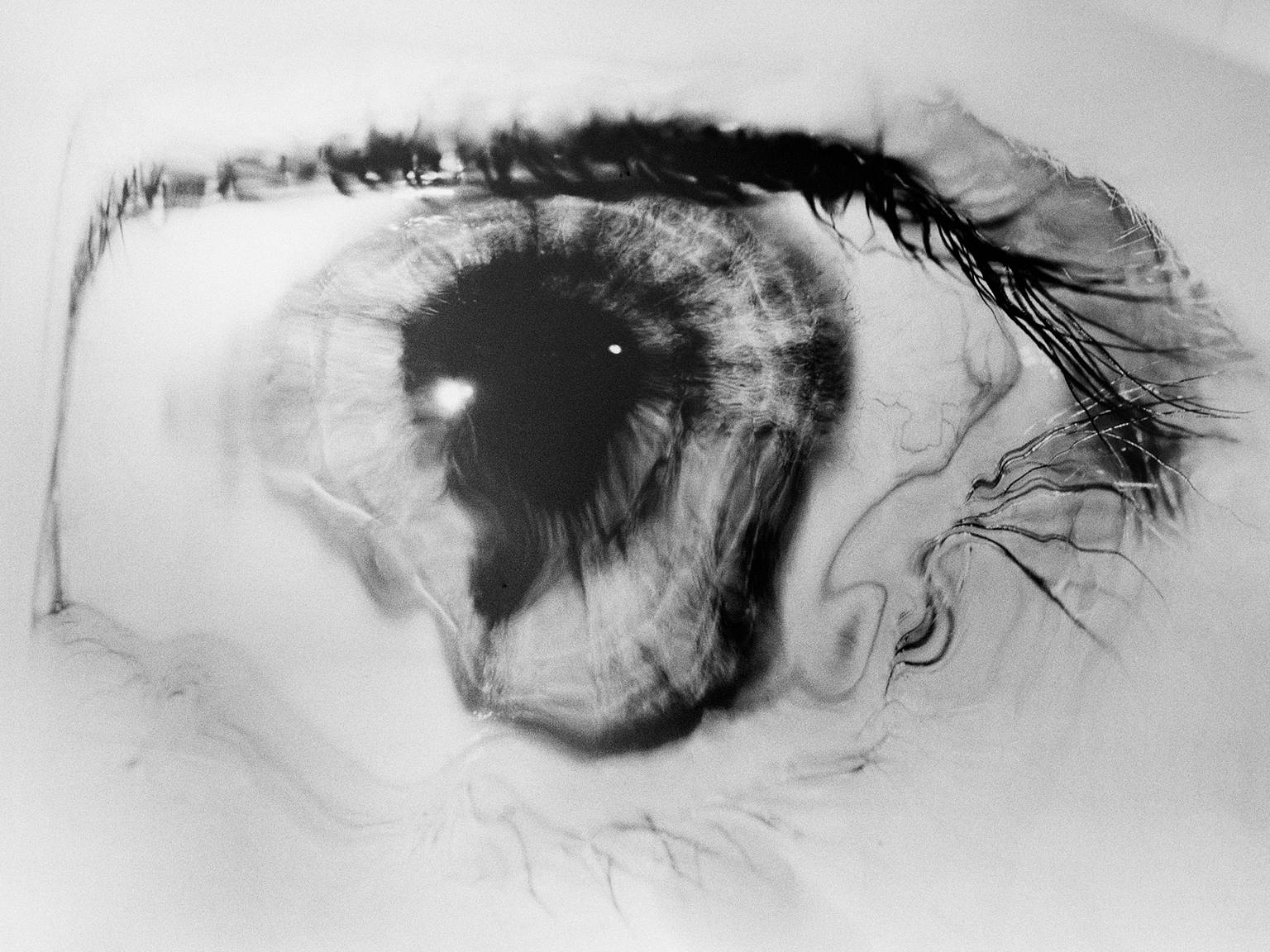Floating, Falling and Colliding Beyond Reality: Interview with Film Photographer Aapo Huhta
11 Share TweetHelsinki-based photographer Aapo Huhta is driven by exploration - his work is full of the wonder that arises from maintaining curiosity, playfulness, and experimentation at every stage of the process. In his project Gravity, Aapo offers the viewer the possibility of entering a space that is beyond their imagination; characterised by mystery, a lack of control, and the inevitability of human change.
In this interview we spoke with Aapo about Gravity and the distorted, painterly figures that "float, fall and collide" through the mysterious realms created in his darkroom.

Hi Aapo! Could you start by telling us a bit about yourself and how you got started with film photography?
Hi, thanks for having me. I come from a small village in the middle of Finland, but I have found my home in Helsinki and have been there for almost 20 years. Around the time I moved to Helsinki, I purchased a camera and began taking pictures, primarily using my friends and girlfriend as subjects. These images lacked a clear purpose and I guess I lacked a profound understanding of my actions. In the beginning, what really caught my eye was the coincidental nature of photography. Over time, this evolved into a concept of collecting these chance occurrences by developing a nose for them.
I soon then applied to study photography at the Lahti Institute of Arts and Design in Finland. Also, I continued my studies and did my Master's in photography at the Aalto University of Arts and Design in Helsinki. I became interested in reading photographs through a "documentary element" during my studies. This meant exploring the actual events behind the photographed illusion, rather than the illusion itself. This perspective on reading photography has followed me ever since. The exploration of the medium has then taken me to 40-something countries. I have made three monographs for now and exhibited these projects in an exhibition form in different countries. I am also a photobook lover. I collect and make them, and I teach about making them these days too. I think I was really lucky that things just fell into place with photography.
You use a lot of very high-contrast black and white in your photography. Is there a reason behind this choice?
It is funny to me as I haven’t thought of myself using high contrast. But I typically focus on the nature of the black tones present in my pictures, and I try to be really really precise with it. Sometimes, the black can be this weird, sticky, dense substance, but it can also be just a shape or something lively and undefined. But there is indeed a lot of emphasis on thinking about the black in my work.
What attracts you in your personal work? What are you looking for when you’re taking photographs?
My photographic approach is often characterised by a limited understanding or ability to articulate my images in the early stages of their creation. I try to maintain a sense of curiosity, playfulness, and experimentation during this phase. I see it as a question mark, allowing for the joy of discovery. The themes begin to unfold for me during the process. I like to describe this process as a continuous movement in which my task is to respond and react, and the outcome is kind of a sum of this process of reaction. This way, the process unfolds almost naturally, requiring me to merely allow it to happen and respond to the movements within it.
Usually, the themes in my work are closely linked to events in my personal life. While the connection isn't always literal, I can often identify life events that triggered specific themes, which then developed into projects. But I also have a wish for myself to avoid repetition. I hope I can create a new skin as an artist with every project I make. To keep myself humble and have this curious feeling to start all over again.
A lot of your images, especially in Gravity, are distorted and manipulated. What are some of the techniques you use to achieve this, and why do you use them?
There is no specific pattern for achieving this but it comes through trial and error. All the distortions are chemical or optical, and I have also experimented with expired photographic papers from the Soviet Union dating back to the 1980s. For me these methods carry a certain level of coincidences. It gives me the joy of discovery and with the coincidences, I feel I can sometimes reach beyond my imagination.
This manipulation makes your photographs look very painterly, and it makes me wonder if you get your visual inspiration from paintings or drawings. What inspires you?
Mostly music, but some paintings too. I really admire Jenny Saville’s works. And musicians like Kae Tempest and Adrianne Lenker have a huge place in my heart.
Can you tell us a bit more about the origin and context of this project, Gravity?
Gravity series dives into the things that makes us who we are — our identity and personal growth. We can think of a person's life as a journey towards becoming who they are meant to be, starting from early childhood. We're all like these works in progress, changing and evolving. But then, sometimes, there's this pivotal moment, like a turning point in our story, where time and different experiences kind of sculpt us, sometimes even batter us around unexpectedly. And we then end up becoming something different from what we initially expected to be. It can be quite frightening.
That feeling, or fear of not having complete control over where life takes us, has been on my mind as I have worked on this series. I started to explore the theme of losing control in my studio. I invited people over, and asked them to jump on a trampoline against a black backdrop. It is an extremely tender moment when the body is just about to hit the surface. People physically lose the control of themselves, or their bodies.
I also wanted to see if I could lose control of the image-making. So after shooting I have developed the films in a really coincidental ways. I rarely develop films evenly, but I opt for a more unexpected approach. Especially with black-and-white film, there's a remarkable resilience. It often feels like no matter what you do, an image will emerge. I like to put the film material under a certain amount of stress and see what it asks me to do. Also, with the printing process, I have used expired and sometimes moldy photographic papers from the Soviet Union from the 1980s, whose light sensitivity is quite uneven and generally poor. Some of these images have been printed on these papers. These experiments change the images or change their pitch-black space into something undefined, like a texture of gray tones, where these human figures float, fall, and collide.

What did your photographic process look like for this project? Did you have a particular idea for what or whom you wanted to shoot?
It started as an experimentation, and I only had a vague idea of using the trampoline this way. Explaining my ideas to the people I invited to be photographed was challenging because I was still learning about it too. I wanted to be open and honest about my ideas, and also admit that I didn't know everything I was doing, or interested in. I am grateful to all the people I got to photograph for this as I know it takes a lot of courage and trust to be photographed in this way. To maintain this trust I wanted to show all the pictures to the people in them. That was exciting for me, as these pictures deal with the darker aspects of life. Some people found it relieving to be photographed this way than to be in a passport photo, as these images go far beyond reality. Although the work is quite heavy and even have some violent elements in some parts of it, I am grateful to have found a safe way to do it. This is kind of a crazy contrast to the moment when the images were made, because it was actually quite funny to make the pictures as it was such a weird situation with the trampoline.
You have a background in documentary photography. Why did you begin to move away from a photojournalism / documentary style of working? How do you think this has influenced your more abstracted, experimental work, like in Gravity?
Yes, I do have my background in documentary photography. I think that the way I read photographs and think about them is not necessarily rooted in the tradition of documentary tradition but more in the indexical nature of the medium. I have made commissioned works for magazines and NGOs for years and I still do sometimes. But I think I have never identified myself as documentary photographer. I consider myself just someone with a somewhat obsessive interest in photography.
Concerning Gravity, I still approach it through the lens of indexicality—the idea that something real was present in front of the camera. This holds true even as with those images, through the processes of chemical image-making, distortions, and sometimes rephotographing, the traces of the actual events gets dissolved.
Do you have any projects coming up that you’d like to share?
It takes me 2-4 years to come up with a project, and I really want to emphasise the importance of slowness in the process. I finished with Gravity just a few months ago, so it will take some time for sure before I have something new to share.
We'd like to thank Aapo for sharing his work and insights with us! To view more of his work, follow him on Instagram and check out his website.
written by emiliee on 2024-01-31 #people #black-and-white #finland #freedom #manipulation #change #experimentation #control #scandinavia




























No Comments